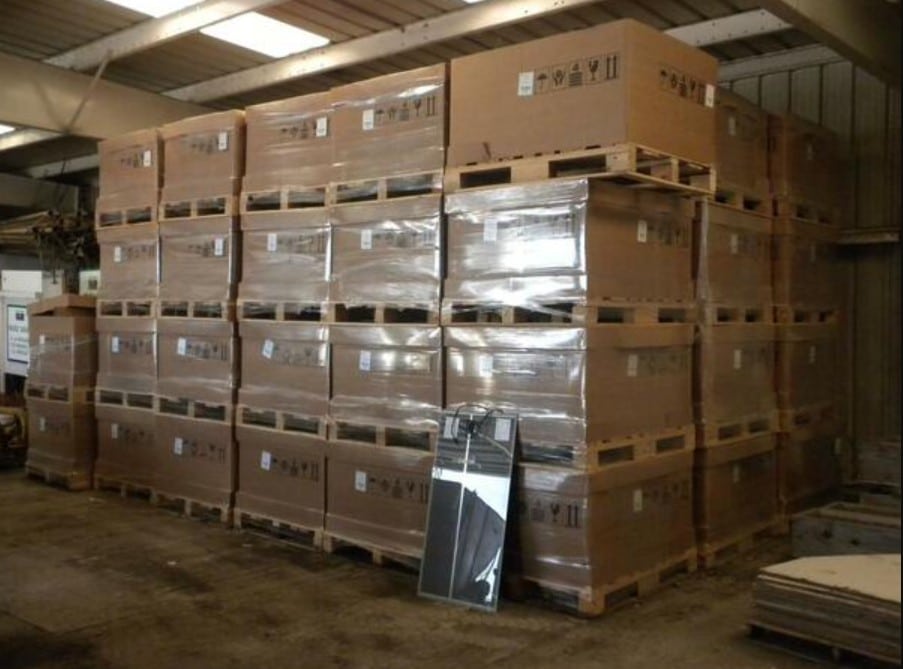
If you’ve been reading our blog so far this year, thank you! We can see the readership numbers growing and we appreciate you tackling our sometimes dense content. As you’ve realized Whaling City Solar does things differently than other solar contractors, and one of our biggest differences is how we handle pricing a solar array.
The numbers in the chart above are real! They’re taken directly off of our suppliers invoices. Most find it hard to believe that solar panels are that inexpensive. Especially when you’ve seen quotes exceeding $1,200+ per panel.
Yours truly used to work in a solar distribution warehouse that stored panels, inverters, racking etc. Pallet after pallet of equipment would roll in from USA and overseas manufacturers, and we’d reroute them to local installers. This is what a solar warehouse looks like from wall to wall:

When we started Whaling City Solar last year, I still had my connections to both the manufacturers and a number of other distribution warehouses. Every time I bumped into a quote from a competing company, I would run back to my supply chain and ask how much it was to buy that solar panel instead of the one I had quoted. Sometimes it was cheaper, sometimes it was more expensive. After a few iterations of this, I wondered: Why not just offer them all and let the customer decide?
The problem with this approach is that the solar panel itself is only a portion of the end price. In addition to the panels themselves, a fully functioning solar array requires also an inverter, racking, engineering plan sets, structural stamps, a utility connection agreement, etc. Don’t forget to add in some highly skilled labor to design, install and manage the project in a timely manner.
Details on the chart methodology can be found here on our SeeThru Pricing page.

Instead of explaining this reality to their customers, 99% of solar installers just say “Here’s what it costs” and never itemize anything out. That makes sense as a business plan for two reasons:
- The 26% Federal Tax Credit incentive is calculated from the total end price from the contractor including all additional services. A simple end price makes it easy to see what number is eligible for the tax claim.
- The public has no idea what panels actually cost! By hiding behind their non-itemized list, the homeowner has no information to negotiate or question where potential savings could be had.
So can we make a better pricing system?
Yes! The answer came from looking the project like engineers from the bottom up, as opposed to sales managers looking from the top down.
Let’s compare the two processes:

VS.

Conclusion
It’s difficult to explain to potential solar customers how the big picture works. I wish every solar company around us took the time to explain each and every detail for such a big ticket purchase. Alas, I only own this one so we’ll do what we can from here!
Finding our content interesting? If you’d like a zero pressure quote for a solar array anywhere in MA or RI we’d be happy to provide one free of charge. We’ll even throw some smiles and friendly conversation along the way. Otherwise, please check back next week for some more technical solar content that’s not full of fluff!

